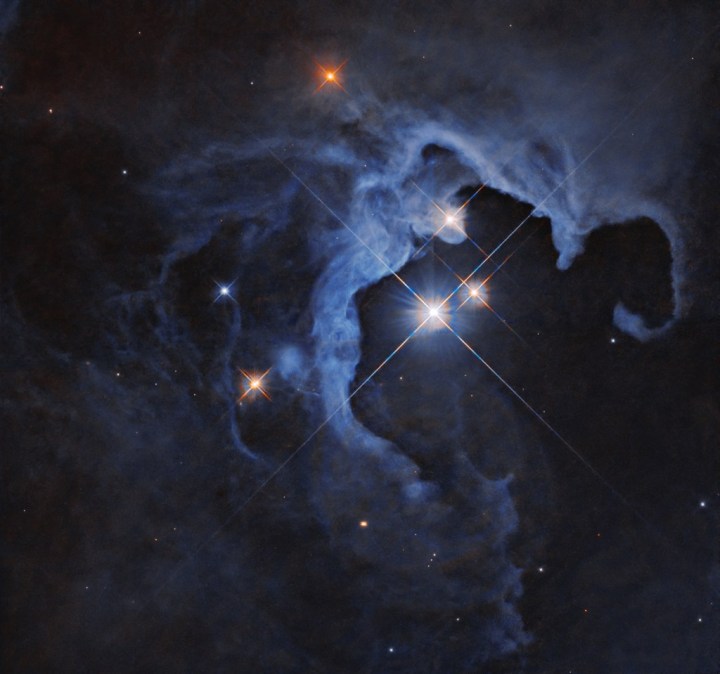Hubble catches a child star pulsating in a triple star system


A beautiful new picture from the Hubble Space Telescope exhibits a triple star system, the place three stars are working in tandem to create a mirrored image nebula. The trio of stars are positioned 550 light-years away, and embrace one explicit star, HP Tau, that is sort of a youthful model of our solar and can ultimately develop as much as be an identical hydrogen-fueled star in thousands and thousands of years’ time.
At the second, HP Tau is lower than 10 million years previous, in comparison with the 4.6 billion 12 months age of the solar. It is presently a kind of star known as a T Tauri star, which is a variable sort of star that modifications in brightness over time. There are two causes {that a} star will probably be variable: Either it stays the identical brightness, but it surely seems to be roughly brilliant from Earth due to elements like mud getting in the best way of our view of it, or the star is definitely altering its brightness ranges over time.
Some variable stars are predictable and alter brightness over a set interval, resembling Cepheid variables, which pulsate in a predictable method with a relationship between their general brightness and the velocity at which the modifications in brightness occur. That makes Cepheid variables extraordinarily vital in astronomy, as their pulses can be utilized as mile markers to inform how far-off they’re — which makes them a part of the “cosmic distance ladder,” which is key for cosmology research.
But different stars fluctuate their brightness in unpredictable methods — just like the close by star Betelgeuse, which was as soon as one of many brightest objects within the sky, however whose brightness has fluctuated wildly in recent times. In that case, some astronomers thought that Betelgeuse was altering in brightness as a result of it was coming to the tip of its life and was about to go supernova, however more moderen analysis means that the star really produced a cloud of fabric that blocked a few of its mild, making it seem dimmer.
As for HP Tau, this star seems to be altering in brightness in each predictable and unpredictable methods: unpredictable as a result of its precise brightness is fluctuating as its grows by means of the early stage of its life, and predictable as a result of it has giant sunspots. As NASA explains: “The random variations may be due to the chaotic nature of a developing young star, such as instabilities in the accretion disk of dust and gas around the star, material from that disk falling onto the star and being consumed, and flares on the star’s surface. The periodic changes may be due to giant sunspots rotating in and out of view.”











